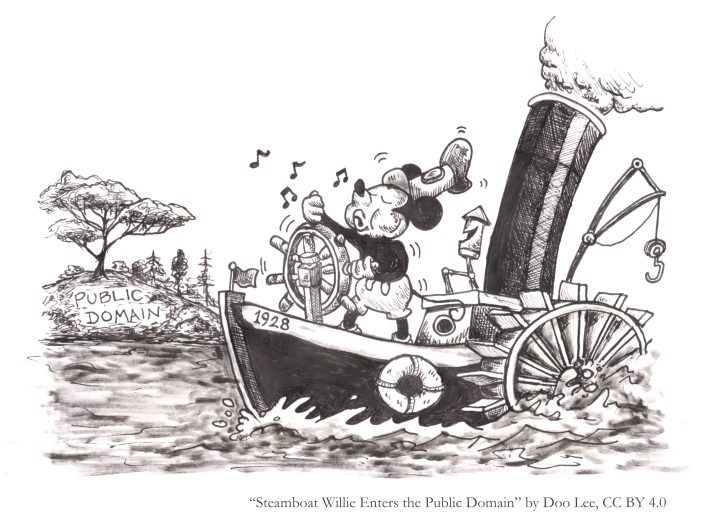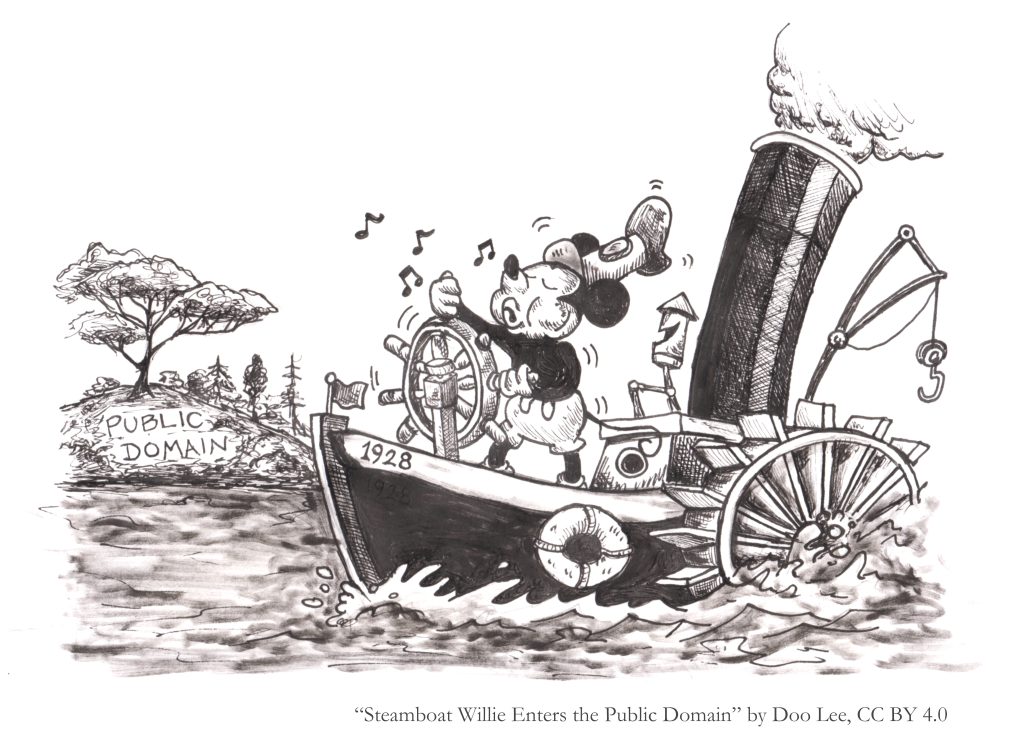

In the jurisdiction of intellectual property, few names shine as bright as Mickey Mouse. Yet, as the clock struck midnight on 1 January 2024, Micky took a historic step: he entered the public domain.[1] For many, this is their chance to dive into their creative minds and transform Mickey into distinct bits and pieces. But the reality is more complex. With the expiration of copyright, a new player has suddenly shifted into the foreground: Trademark law—a realm where Disney’s grip on Mickey tightens even as copyright loosens its hold.
Yes, Mickey may be free from copyright, but trademarks stand as the gatekeepers to his image and name. Unlike copyright, which expires after a set period, trademarks remain as long as they are actively used in commerce. Disney’s trademark rights to Mickey Mouse and his iconic name remain intact, serving as a barrier for those seeking to incorporate this iconic character into their own works.
However, the Supreme Court of the United States has stated that trademark rights cannot block the freedoms granted by copyright expiration.[2] Does this mean that trademark law cannot offer the same strong protections for Disney’s rights to Mickey as copyright once did? Not necessarily. Using Mickey in a new creative work is permissible under trademark law, only in the specific event that it does not confuse consumers about the source of the product.[3] In essence, a person can never use Mickey to portray an official Disney product.
There is a fine line between infringing on Disney’s rights and being in the clear even now that Mickey’s copyright has expired. How Mickey is used is the key. Mickey as a brand identifier on merchandise or implying Disney sponsorship is an infringement. However, incorporating Mickey into a new cartoon or book—as an expressive element rather than a brand—falls within the domain of fair use.
Yet, there is another element to consider. Can the public argue the use of freedom of expression to loosen the restrictions that trademark law creates? Only in the event that they comply with the “nominative use” doctrine. This doctrine uses a restrictive test to provide for situations in which a person may use another party’s trademark to refer to the trademark owner’s actual goods. The test is as follows:[4]
- The product or service in question must not be readily identifiable without using the trademarked term.
- The user of the term must use no more of the trademarked term than is necessary for the identification or description of the product or service.
- The user must do nothing to suggest endorsement or sponsorship by the trademark owner.
The test aims to balance the interests of creators with those of trademark holders and, in this way, allows for Disney to still have control over Mickey.
As we look to the future, the question arises: how will Disney navigate this new era for Mickey Mouse? Will it uphold the spirit of copyright expiration, allowing for a flourishing of new Mickey-inspired works? Or will it seek to maintain its grip through trademark legal maneuvers?
In the end, the story of Mickey Mouse’s journey into the public domain is not just a legal tale; it is about the complexities and intricate details of intellectual property law. It is about the loopholes it creates and those it destroys, and in the case of Disney’s rights to Mickey Mouse, it reminds us that “When one door closes, another opens.”
[1] https://www.nytimes.com/2024/01/01/arts/public-domain-mickey-mouse.html [2] Dastar v. Twentieth Century Fox, 539 U.S. 23 (2003) [3] Trademarks Act (RSC 1985 c t13), section 6[4] New Kids on the Block v. News America Publishing, Inc., 971 F.2d 302 (9th Cir. 1992).
